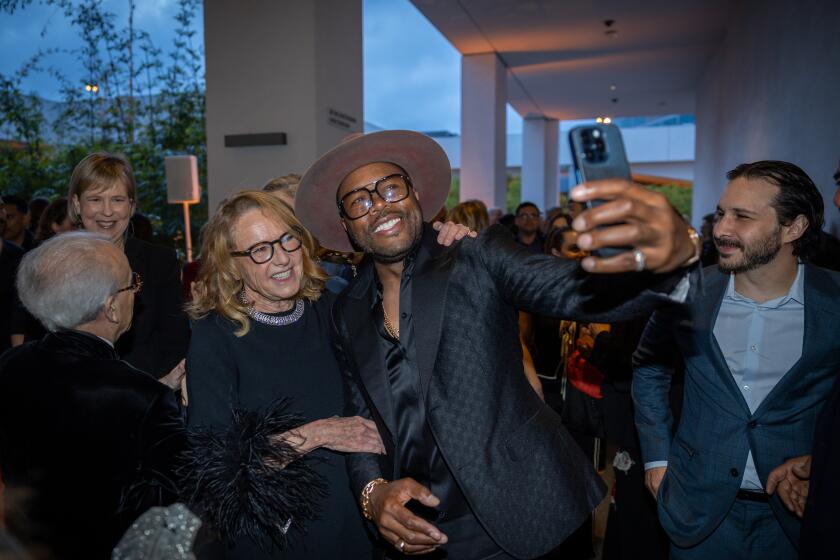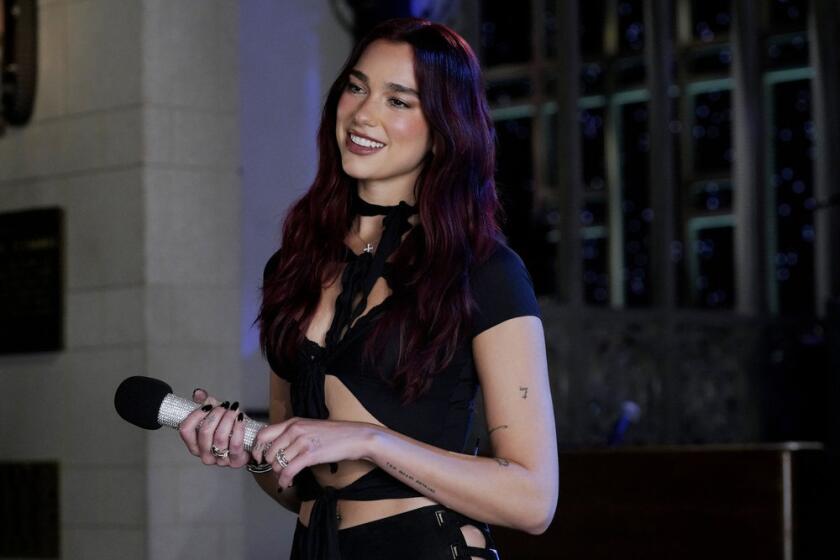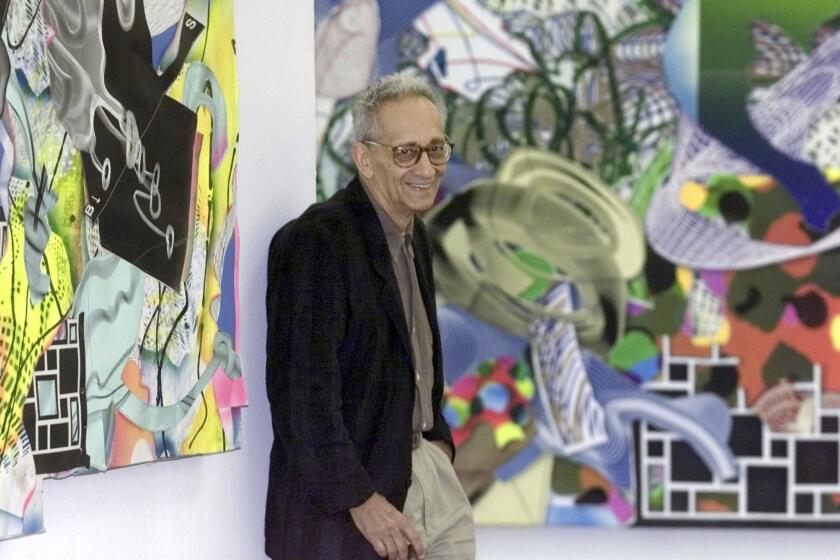The radio as rabbit hole: Alice comes to KCRW
The premise sounds as nonsensical as anything from the pen of Lewis Carroll: a storybook’s extraordinary illustrations prompting the creation of a play for radio.
But the contemporary art by DeLoss McGraw in the 2001 edition of “Alice’s Adventures in Wonderland” made the book so popular among listeners when KCRW-FM (89.9) gave it away as a premium last year that station management decided to stage a dramatic reading of the classic children’s story. The two-hour trip down the rabbit hole will air from 2 to 4 p.m. on Christmas Eve, and at the same time on New Year’s Eve.
“Given the kind of station we are, we thought it was a suitable Christmas offering. It’s edgy. It’s unconventional. It’s arch and it’s playful,” said KCRW general manager Ruth Seymour. “There’s no sentimentality about this. It’s just very crisp. It’s mad.”
Seymour said it was a daunting undertaking. “After all, you’re taking on a classic,” she said, and “many of us have not looked at it since we were children.”
She said director Louis Fantasia and his star-studded cast have created an “Alice” meant to appeal to both children and adults.
“I think children will read it naively, in the best sense of that word,” said Fantasia, who also reviews theater for KCRW. Meanwhile, adults may appreciate not only the fantastic situations but also the subtle, acerbic humor.
Harry Shearer, who among many other pursuits has hosted “Le Show” on KCRW for 20 years, narrates the tale.
“It’s a perfect Harry Shearer story. He has that humor himself,” Seymour said. “He’s such a wonderful storyteller, and he’s got that great radio voice.”
Alice is played by 26-year-old Vinessa Shaw, who has appeared in such movies as “40 Days and 40 Nights,” “Corky Romano” and “Eyes Wide Shut.” Seymour said the actress ensures that the title character comes across as youthful but not childish.
“Alice is a very sophisticated little girl,” Seymour said. “Alice is a skeptic, and she constantly gets into situations where she’s appalled by the people around her.”
Fantasia said he wanted an independent Alice, on a trip of self-discovery. “In the more traditional reading of the story, she seems to be the good girl doing what she’s told.” He said he also took care not to make the production overly broad or surreal, instead letting the wordplay and curious situations speak for themselves.
“We have alienated a lot of the Lewis Carroll fan club. It’s not English enough,” he said. “I didn’t want to make the English garden variety again.”
“That’s precisely why I was interested in being part of it,” said actor Michael York, who plays the Red King. “The perfect BBC version -- we’ve seen all of those.”
To further set it apart, Fantasia said he consciously featured a cast heavy in Americans, which also set up a collision between York and the other Britons in the royal court and Alice, who, he said, doesn’t “surrender to English propriety.”
The rest of the cast includes Joe Spano as the March Hare, Hector Elizondo as the Mad Hatter, Rhea Perlman as the Dormouse, Julia Migenes as the Red Queen, Malcolm McDowell as the Gryphon, Orson Bean as the Mock Turtle and John Rubenstein as the White Rabbit.
“I’d listen to the thing just to hear Elliott Gould play the Cheshire cat,” York said.
“Simpsons” actors Yeardley Smith (Lisa) and Dan Castellaneta (Homer) play the Mouse and the Dodo, respectively. Even KCRW public affairs host Warren Olney gets a line.
Seymour said the story was the biggest selling point in attracting performers. “Everybody saw it as an opportunity to play, but to play with a great deal of intelligence,” she said. “There’s not a facile word in all of this. That’s why it’s lasted all these years.”
Full of dichotomy, the story plays with relativity and upends notions of time and space. It’s “complex and simple at the same time,” York said
“It’s a children’s story for children of all ages,” he added. “It’s a nice little gift to give at this time of year.”
Messages to the people of Iraq
Senate Democratic leader Tom Daschle complained last month about the stridency of conservative talk radio in the U.S., which he said incites its listeners. He should be thankful the broadcasters targeting him aren’t in the Air Force.
This week the Defense Department disclosed that it has been blanketing Iraq not only with propaganda leaflets but also with anti-Saddam Hussein radio broadcasts beamed from planes circling the country.
“Saddam uses his soldiers as puppets, not for the glory of Iraq,” says one broadcast, adding that he placed land mines in the way of his retreating army during the Gulf War. “Will your unit be the next one sacrificed?”
Other messages, meant for Iraqi civilians, compare Saddam to Soviet dictator Josef Stalin, charge that he sells oil to buy and produce weapons rather than feed or medicate the populace, and state that Iraqi children die of easily treated diseases.
According to the Defense Department, one broadcast suggests he be stopped “before he destroys Iraq and crushes the hope of its proud people.”
Among the leaflets being dropped from different planes are notices about the broadcasts and newsletters letting listeners know where and when to tune in.
The Air Force used the same planes -- massive four-engine Lockheed EC-130E Commando Solos packed with electronic gear -- in Bosnia, and again over Afghanistan to broadcast music, news and information, including warnings to civilians to stay away from potential bombing targets, and explanations of the Sept. 11 terrorist attacks.
More to Read
The biggest entertainment stories
Get our big stories about Hollywood, film, television, music, arts, culture and more right in your inbox as soon as they publish.
You may occasionally receive promotional content from the Los Angeles Times.






